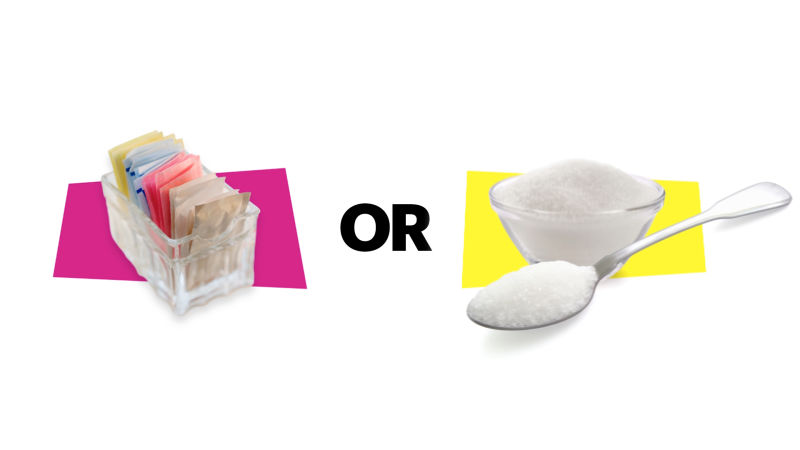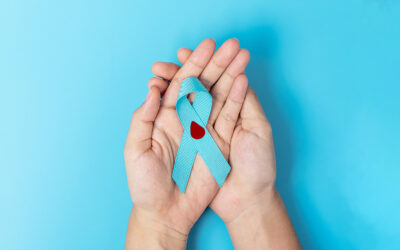Most diabetics find controlling blood sugar levels a challenge. In many diabetics, even a little sugar in a mug of coffee or tea can cause a spike in blood sugar. Thankfully, today, there are several types of artificial sweeteners on the market that are made specifically for people who want to avoid spikes in blood sugar.
Essential Facts About Sweeteners
Because there are many types of sweeteners, diabetics need to read labels and choose wisely. Here are three facts about sweeteners that all diabetics should know:
Sugars
Sugars are simple carbohydrates available in many forms. This may include cane sugar (sucrose), brown sugar, honey, fructose, glucose, agave syrup, maltodextrins, fruit juices, corn syrup, dextrose, barley malt, and molasses. All of these not only raise blood sugars but also increase the calorie count of foods. Diabetics should avoid these or use them very sparingly. These sugars are found in many processed foods and the quantity is stated in the package nutrition label under Total Carbohydrates as Sugars.
Sugar Alcohols
Sugar alcohols are neither sugar nor alcohol. They occur in nature, but most used in food are created through manufacturing processes. There are many different types including mannitol, isomalt, sorbitol, maltitol, xylitol, and erythritol (see our blog, What Are Sugar Alcohols & Why Do We Use Them). They are found in many types of sugar-free gum, candies, desserts, syrups, and snacks. They are much lower in calories than regular sugars but – except for xylitol and erythritol – usually raise blood sugar levels mildly for a prolonged period. As well, sugar alcohols – again, except for erythritol – can cause gastrointestinal discomfort (bloating, gas, flatulence) in some people. Erythritol is the only sugar alcohol that neither raises blood sugar nor causes gastrointestinal discomfort. Safer than sugars for diabetics, sugar alcohols other than erythritol should not be consumed in large amounts because they will increase blood sugar levels for an extended period.
Artificial Sweeteners
Artificial sweeteners are sugar substitutes that are manufactured in laboratories.. While they are as sweet or sweeter than table sugar (sucrose), they contain very few or no calories. These sweeteners are often used to sweeten beverages or to enhance flavors of baked and processed foods. Most of these artificial sweeteners are not broken down by the body and are quickly flushed out, hence increased blood sugars are rare. Note that Splenda, although an artificial sweetener, can have cause blood sugars to rise when eaten in large quantities because it is made from dextrose, maltodextrin, and sucralose which are all carbohydrates.
The concern about artificial sweeteners (Equal, Sweet’N Low, Sugar Twin, Splenda, Hermesetas, and others) is that we are not aware of all the effects they have on the human body. Every so often, you hear frightening findings from one study or another than makes you think twice about using artificial sweeteners. If you are a diabetic, you should use artificial sweeteners because laboratory tests show they do not raise blood sugars, but many people have concerns about other ways that aspartame, cyclamates, saccharin, and sucralose affect the body.
Stevia
At this time, stevia is the only known natural sweetener that does not increase blood sugars (see What is Stevia, Anyways?). It comes in granular and liquid forms and is widely available. Many believe stevia has an unpleasant aftertaste so companies who make stevia sweeteners or use it in food products often add a small amount of a sugar or sugar alcohols to cover the unpleasantness. Be sure to read labels carefully. Remember that even a small amount of a sugar or sugar alcohol can affect blood sugars. Choose stevia sweeteners that are pure stevia or in which the only other sweetener is erythritol.
Types of Artificial Sweeteners
Diabetics who want to avoid spikes in blood sugar should be familiar with the types of artificial sweeteners. The majority are low in calories and include the following:
- Aspartame (Equal, NutraSweet) can be used to add flavor to both warm and cold foods including beverages. However, at high temperatures like in hot coffee, the sweetness may be lost. Individuals who have phenylketonuria should avoid aspartame.
- Cyclamates (Sugar Twin, Sweet’N Low) can be used to flavor both cold and hot beverages. They are not used in food or beverage production.
- Saccharin (Hermesetas) has not been used in food or beverage production for many years due to health concerns. It is still available in tablet form for use in beverages in some locations (including Canada).
- Sucralose (Splenda) is widely used to hot and cold beverages, sprinkled on foods (such as fruit or cereals), and home-baked foods. Many processed foods and prepared desserts contain this sweetener.
- Acesulfame or Ace-K (Sweet One, Sunett) can be used in hot and cold foods but it is most commonly used in pre-made baked foods. It is 200 times sweeter than table sugar (sucrose). It is not available for purchase by general consumers.
- Neotame is a relatively new artificial sweetener that is a derivative of aspartame. It is 11,000 times sweeter than sucrose and, thus, can be used in very small amounts to sweeten foods. It is used by food producers and pharmaceutical companies. It is quickly broken down in the body. Because it is used in very low amounts, it does not affect blood sugars.
- Advantame is the newest artificial sweetener and is 22,000 times sweeter than sucrose. It, too, is a derivative of aspartame that is used commercially and not available to the general public. It is used in all types of foods including non-alcoholic and alcoholic beverages, desserts, candies, ice cream, pudding, jelly, syrups, chewing gum, and baked foods.
Choosing A Sweetener
The first thing to appreciate is that all the artificial sweeteners taste slightly different. Thus, personal preferences are key. Try as many as you can and don’t consume a sweetener that is not to your liking.
Second, learn to read labels because some artificial sweeteners are only low in sugar while others are sugar-free. Also be careful because sometimes the product label will state sugar-free and will list alternatives to white and brown sugar but may include other sugars like agave syrup, maltodextrin, molasses, etc. or may have a non-erythritol sugar alcohol or alcohols added, all of which may affect blood sugars.
Finally, if trying to lose weight, be wary of the calorie value of sweeteners. One teaspoon of white sugar is 20 calories so look for a sweetener that contains less than 10 calories per teaspoon (or tablet or packet).
Always read labels when shopping. The more you understand about sweeteners, the better you will be able to make good decisions on your food choices and manage your diabetes. At the same time, eat a healthy diet, exercise regularly, and make a habit of monitoring your blood sugars regularly.
The Following Table Is Provided Courtesy Of Diabetes Canada
Health Canada has approved the following sweeteners as safe if taken in amounts up to the Acceptable Daily Intake (ADI). These sweeteners may also be used in medications. Please read the label. Ingredients may change. New products may be available.
Sweetener | Brand name | Forms & Uses | Other Things You Should Know… |
| Acesulfame Potassium (Ace-K) |
|
|
|
| Aspartame |
|
|
|
| Cyclamate |
|
|
|
| Saccharin |
|
|
|
| Sucralose |
|
|
|
| Steviol glycosides (Stevia-based sweeteners) |
|
|
|
* For nutritional reasons, pregnant women should not consume excessive products containing artificial sweeteners, since such foods could replace more nutritious food.






0 Comments